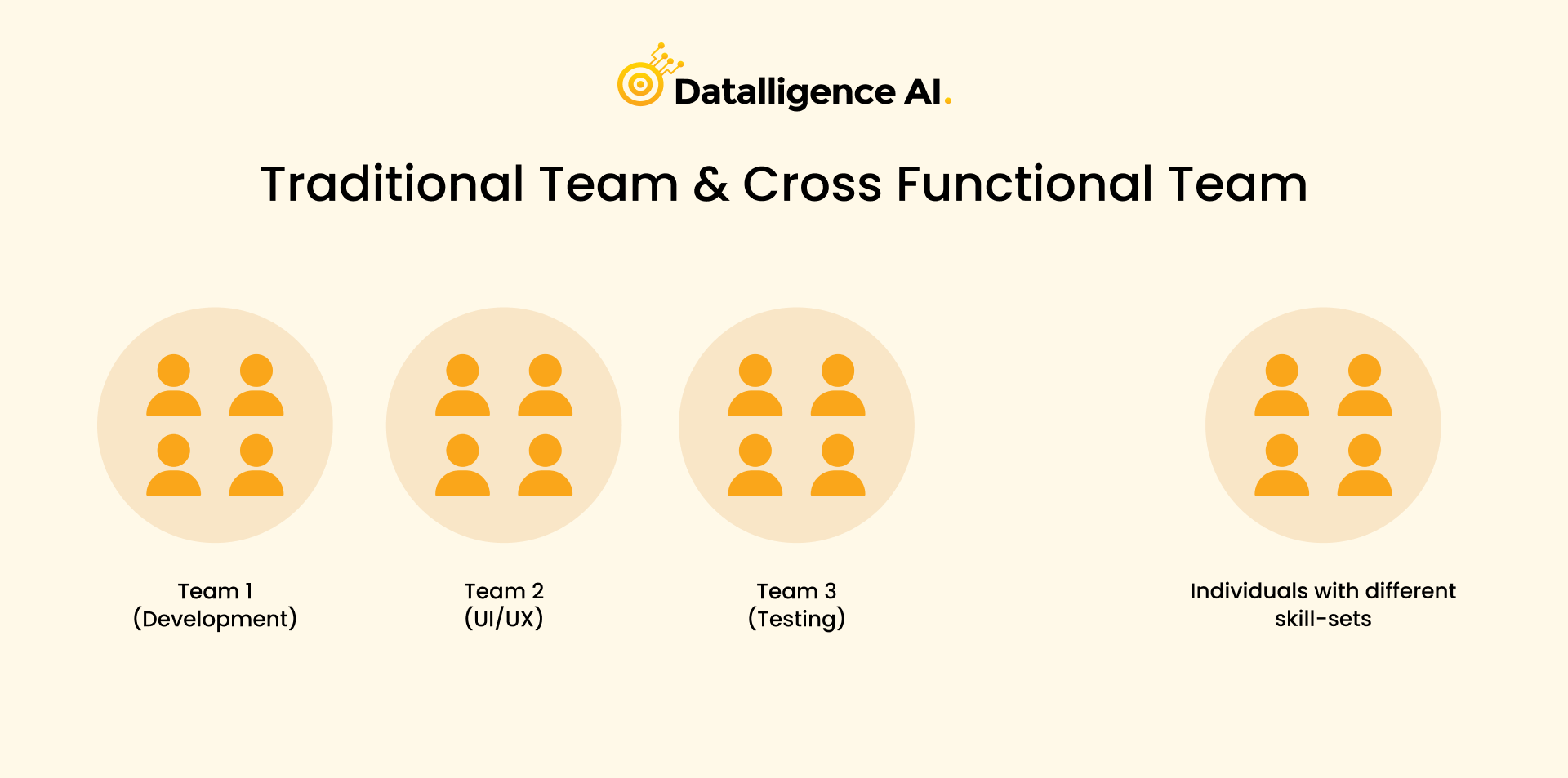Agile strategies have become essential tools for organizations looking to adapt and thrive in today’s rapidly changing business landscape. By embracing agile methodologies, companies can achieve faster time-to-market, enhanced flexibility, and improved collaboration. However, implementing agile strategies is not without its challenges. In this article, we will explore seven key steps to successfully implementing agile strategies in your organization
In addition to the numerous benefits, organizations adopting agile strategies often face challenges in navigating this transformative journey. It’s crucial to grasp agile methodologies, such as Scrum or Kanban, and tailor them to your unique organizational context. An agile strategy example can illuminate how these methodologies translate into real-world success, showcasing adaptability and rapid response to change.
Crafting a robust agile implementation plan is the linchpin to success. From setting clear goals and timelines to fostering a culture of continuous improvement, a well-structured plan ensures smoother adoption. Moreover, agile strategy planning involves dynamic communication channels, empowering teams to collaborate effectively and respond promptly to evolving market demands.
By delving into these key facets, organizations can surmount challenges, making agile strategies a cornerstone for sustained growth and competitiveness.
Explore our guide for comprehensive insights into successful agile strategy implementation.
Key Benefits of Agile Strategies
Before diving into the implementation process, let’s first understand the key benefits of adopting agile strategies. Agile methodologies enable organizations to achieve faster time to market, enhanced flexibility in product delivery, and a well-ordered partnership between development and testing. By continuously creating and refining products based on customer feedback, agile organizations can stay ahead of the competition and meet changing customer needs and expectations.
Leading banks, for example, have successfully used agile processes for a significant portion of their development projects, resulting in increased productivity and improved quality.
The Organizational Obstacles to Agile Adoption
Implementing agile strategies requires more than just learning new techniques and buzzwords. It requires a fundamental shift in the organization’s operating model and a change in leadership mindset. One of the main obstacles to successful agile adoption is the resistance to change from employees and management. To overcome this, organizations must secure support from top management and drive cultural change throughout the organization. Agile transformation also requires new skills, fresh ways of working, and investments in technology.
By addressing these obstacles and implementing agile at scale, organizations can unlock the full potential of agile methodologies.
7 Key Steps to Creating an Agile Organization

To create an agile organization, it is essential to follow a systematic and well-planned approach. While there are various stage-by-stage transformation plans available, we have formulated our own seven key steps based on the work of leading thinkers and our own experience working with organizations.
Step 1: Establish a Compelling Reason for Change
Before embarking on an agile transformation, it is crucial to establish a compelling reason for change. This involves identifying the value, flow, and quality improvements that need to be addressed within your organization. Consider missed opportunities, market trends, and operational efficiencies that can be achieved through agile methodologies. By articulating a clear and compelling reason for change, you can create a shared sense of purpose and urgency among employees.
Step 2: Build a Cross-Functional Team

To drive the agile transformation, it is essential to build a cross-functional team with the necessary skills and resources. This team should have the power and authority to drive change throughout the organization. Avoid creating a mere steering committee and instead focus on building a real working group dedicated to the transformation. Ensure that team members have sufficient time and resources to devote to the transformation effort.
Step 3: Transform the Operating Model

To deploy agile methodologies effectively, organizations need to transform their operating models. This involves reorganizing the entire company into cross-functional teams, squads, and tribes. Instead of working in silos, these teams focus on specific customer journeys, breaking down barriers and eliminating misaligned goals and expectations. By embracing a team approach, organizations can improve collaboration, efficiency, and performance.
Step 4: Embrace VC-Style Funding
Traditional funding models often hinder agile transformations, as they are based on fixed scope, timelines, and budgets. To overcome this, organizations should adopt a VC-style funding approach. This involves setting business outcomes for projects and measuring success based on those outcomes. Funding is released as needed, allowing teams to iterate and adapt their approach based on customer feedback and changing market conditions.
Step 5: Utilize Accelerators
Accelerators are foundational capabilities that help agile teams unlock value and accelerate project delivery.
Examples of accelerators include infrastructure-on-demand, continuous integration, and continuous delivery (CI/CD), API architectures, and DevOps toolchains. By utilizing these accelerators, organizations can expedite their agile projects and achieve faster time to market.
Step 6: Modernize IT Architecture
Agility requires flexible and responsive IT systems. Organizations with monolithic system architectures often face challenges in changing, testing and releasing application updates. To address this, organizations should modernize their IT architecture by adopting micro-services and cloud-based infrastructure. Micro-services allow for independent changes and releases, reducing risk and enabling faster change. Cloud-based infrastructure offers scalability and resilience, ensuring systems are always up to date.
Step 7: Invest in Capability Building and Cultural Change
To successfully implement agile and DevOps at scale, organizations need to invest in capability building and cultural change. This involves acquiring new skills, adopting new ways of working, and fostering a culture of collaboration and empowerment. Senior management should lead by example, role-modeling the desired behaviors and setting clear expectations for the transformation. Recruiting new talent and providing training for existing employees are critical steps in building the necessary capabilities for an agile organization
Measuring Progress and Continuous Improvement
To ensure the effectiveness of your agile strategy implementation, establish relevant metrics to measure progress and maturity. These metrics should capture the adoption of agile and DevOps processes across the organization, as well as key outcomes such as frequency of release and time from idea to implementation. Regularly review and assess these metrics to identify areas for improvement and guide your agile journey.
Conclusion
Implementing agile strategies requires careful planning, dedicated teams, and a commitment to cultural change. By following these seven steps, you can lay the groundwork for successful agile strategy implementation in your organization. Embrace agility, empower your teams, and continuously adapt to meet changing market dynamics. Agile strategies will enable your organization to thrive in today’s fast-paced business environment.
Remember, agile transformation is an ongoing journey. Stay committed to continuous improvement and always strive to deliver value to your customers and stakeholders.
Let Datalligence be your partner in driving successful agile strategy implementation. Contact us today to learn more about our agile consulting services and how we can help your organization achieve its goals.











